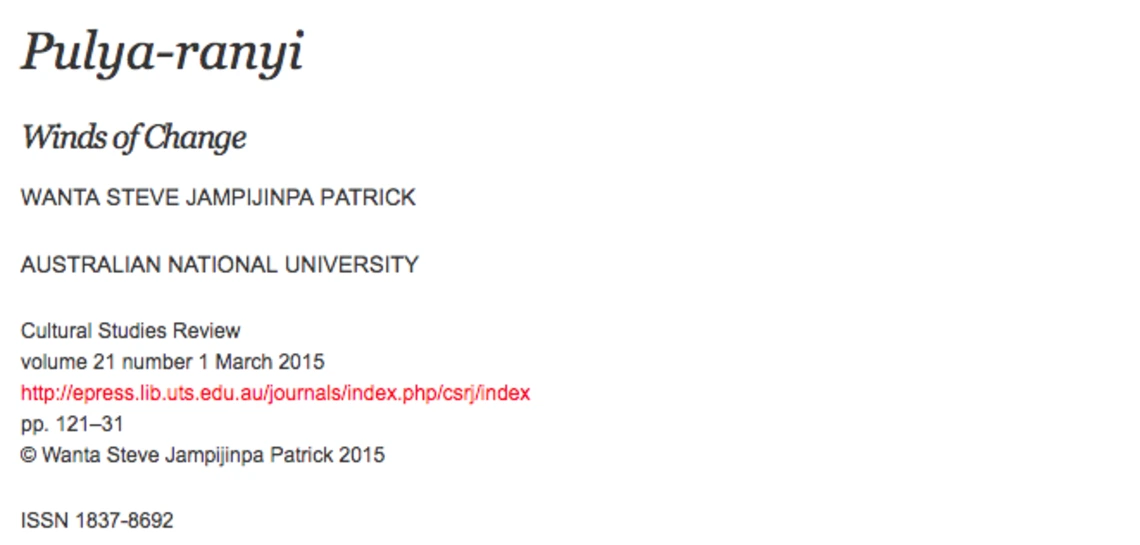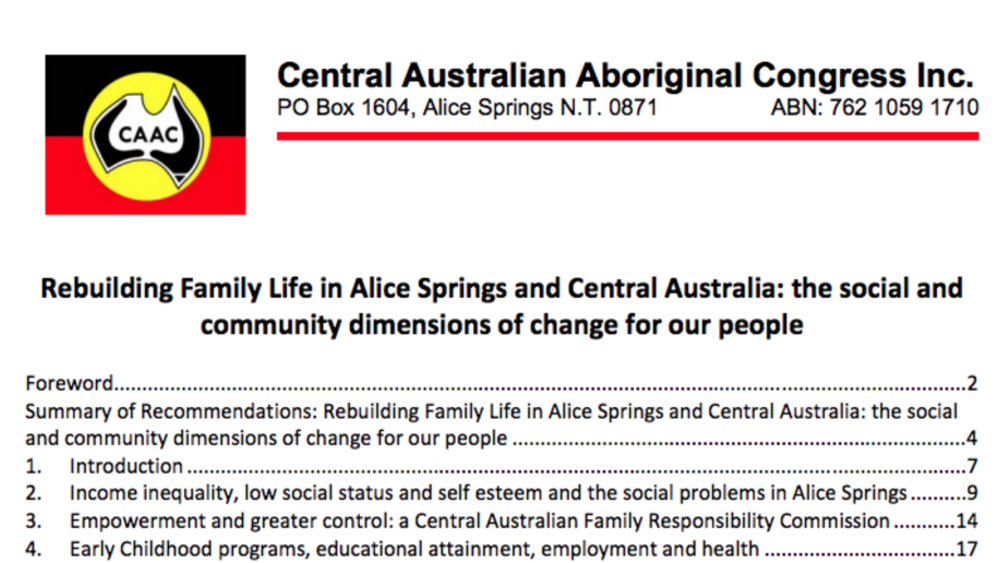Milpirri is a Warlpiri way to get country to express itself. Country is expressing itself all the time. All around Australia, Indigenous people, culture and art express (in various forms) what animals, plants and the elements, including weather and the seasons themselves—look like and speak like. How they tell history stories and knowledge that becomes history. This is how culture teaches us and cultivates us, as the soil is cultivated, and as if we are its cultivators. Who is the gardener ultimately and who is the garden?..
Additional Information
Patrick, Wanta Steve Jampijinpa. "Pulya-ranyi: Winds of Change." Cultural Studies Review. Volume 21, Number 1 March 2015. Paper. (http://epress.lib.uts.edu.au/journals/index.php/csrj/article/view/4420/4754, accessed June 3, 2024)




